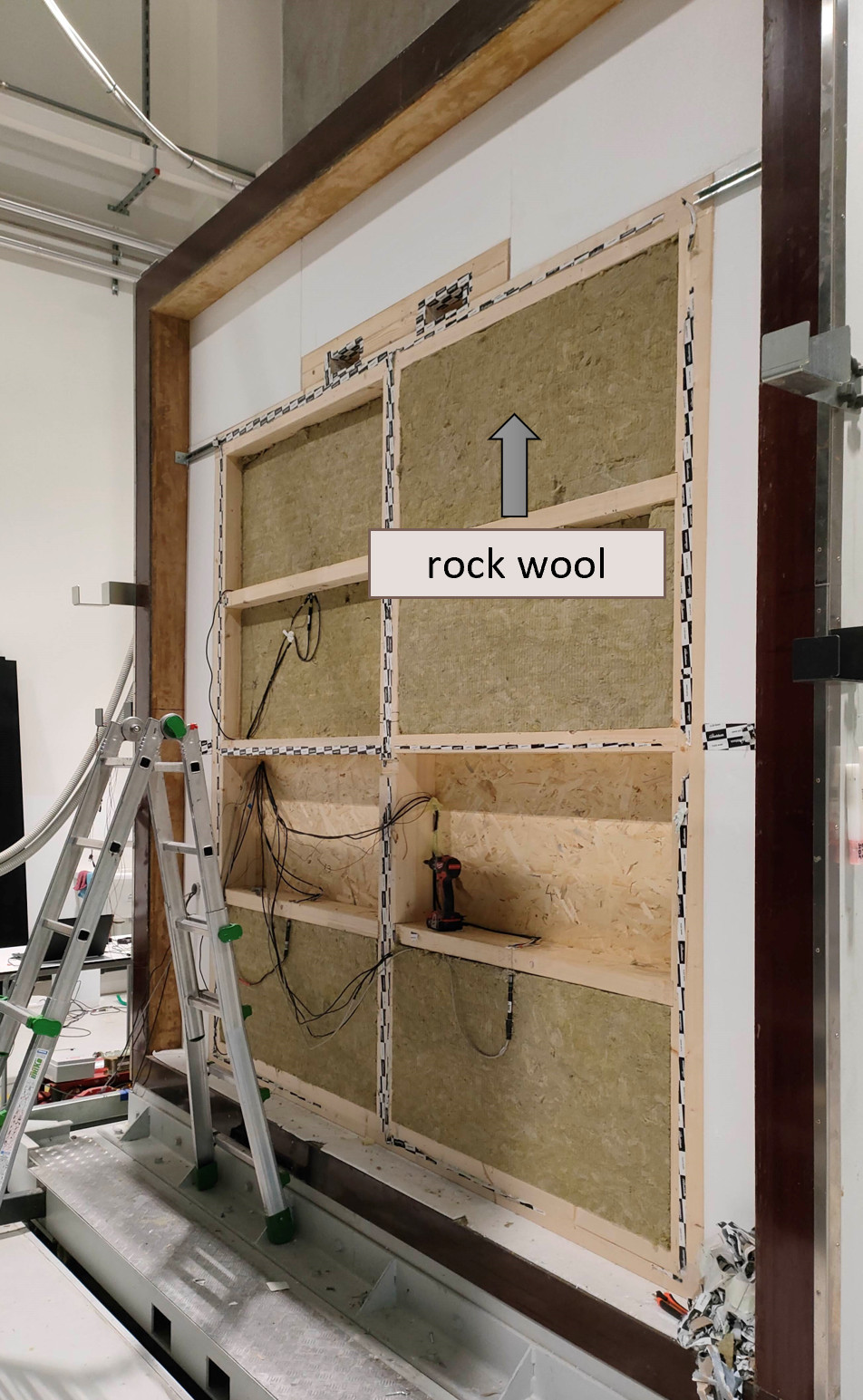Vapor control membrane performance assessment through hygrothermal sensor
- Home
- Success Stories
- Vapor control membrane performance assessment through hygrothermal sensor


Test facade built to test the behaviour of the hygrovariable membrane and installation methods for capacitive sensors
The scope of the PM&VL2 is a complete characterization of all the envelope parts and their effects on internal occupants in real operating conditions, both involving human subjects or thermal manikin. An important feature the PM&VL2 will offer is the coupling of testing and modelling activity, hence exploiting the tests in order to calibrate models and broadening the analyses.
Main author:
Simone Panico
Marco Larcher
EURAC Research
Test facade built to test the behaviour of the hygrovariable membrane and installation methods for capacitive sensors


The experiment involves testing a moisture-adaptive membrane (CLIMA CONTROL 80) when used in the context of a flat roof, using a double climatic chamber to reproduce an exterior and interior environments of a building. Combined temperature and relative humidity sensors are used to monitor the hygrothermal behavior of the roof in critical positions.
The experiment’s setup includes beams preconditioned to specific moisture levels, crucial for evaluating the membrane’s response to different humidity environments and to verify that the membrane allows the roof structure to dry effectively.
The boundary conditions are structured into three phases to simulate different seasonal conditions: summer conditions, winter conditions and a free-floating phase.

Summer Phase: The membrane functioned as a vapor-open layer during the drying phase, allowing the construction to dry out. This was reflected in the significant decrease of relative humidity values across all positions from the start of the drying phase to the Stable Phase.
Winter Phase: In the winter phase, or ‘Flow Inversion’ phase, the membrane operated as a vapor retarder. It effectively prevented moisture transfer from the interior environment to the roof structure. In fact, after an initial redistribution of the moisture within the roof no significant growth of the relative humidity levels were observed.
Equilibrium Phase: During the ‘Free Floating 2’ phase, with no active vapor pressure gradient, the membrane contributed to a third redistribution of moisture within the sample. The sensors converged towards an average relative humidity of 50%, significantly lower than the initial levels, indicating the membrane’s role in achieving a consistent drying of the roof throughout the experiment.
These points capture the membrane’s adaptability and effectiveness in managing moisture under varying environmental conditions.

Displaying relative humidity at the three positions monitored on the DL and DR panels, with the beam pre-conditioned. The plots depict the average sensor readings as dashed lines, with the shaded areas around these lines indicating the range of measurement uncertainty
The flat roof experiment using the moisture-adaptive membrane (CLIMA CONTROL 80) demonstrated its ability to regulate moisture effectively. This was particularly evident in the significant drying observed across all three monitored positions, showcasing the membrane’s adaptability and efficiency in various environmental conditions. These results underline the membrane’s effectiveness and suggest that its use is promising in the context of flat-roofs, but further studies are needed. Future studies should consider comparing a flat-roof incorporating the moisture adaptive membrane with one with a traditional membrane, to provide a more comprehensive understanding of its benefits and performance in different settings. Moreover, longer experiments (several years) would be needed to investigate the long-term behavior, this is however not possible in a laboratory testing facility as the Multifunctional Facade Lab and ideally should be conducted in a monitoring project within a real building (Living Lab).